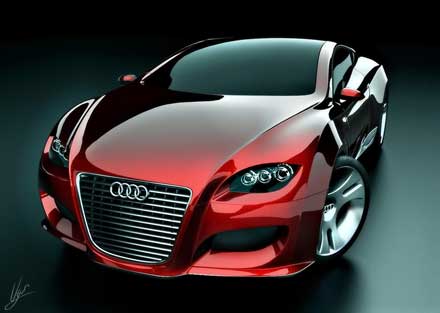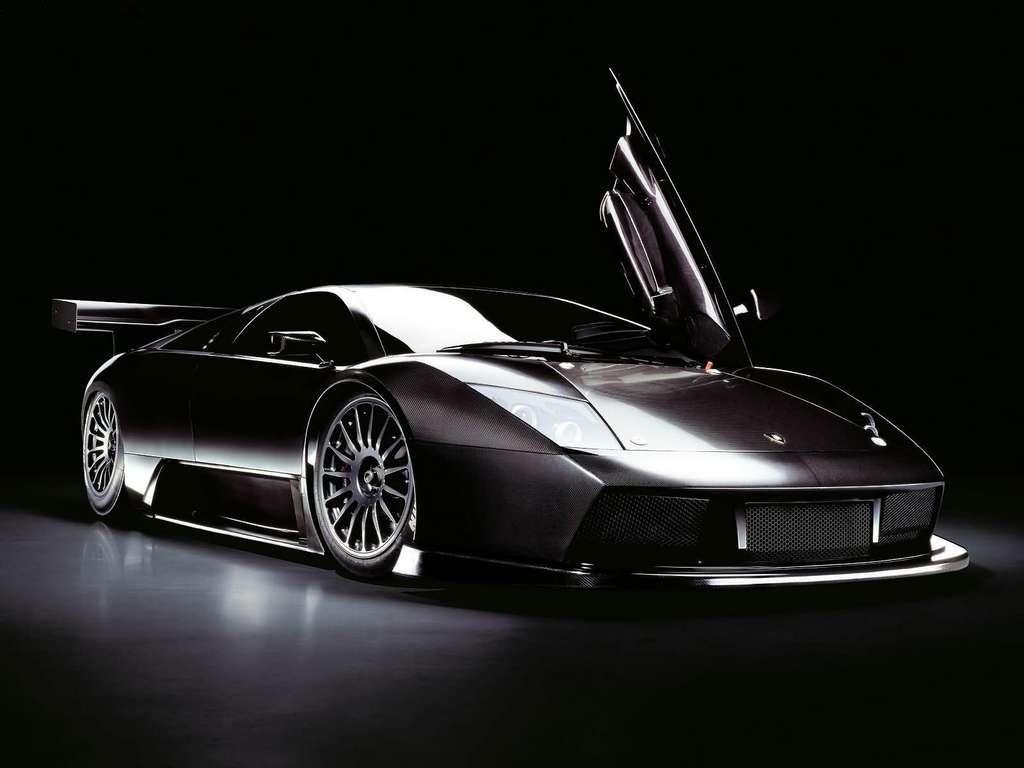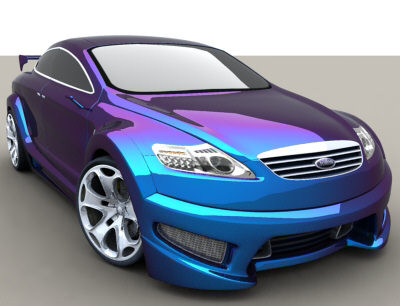 BMW has unveiled a brand new concept car prior to the 2006 Mille Miglia. With hints of today’s BMW Z4 Coupe and one of BMW’s most famous racing cars, the BMW 328, the BMW Concept Coupe Mille Miglia 2006 took pride of place in Brescia, Italy yesterday (May 10) as this year’s entrants were scrutineered ahead of the event.
BMW has unveiled a brand new concept car prior to the 2006 Mille Miglia. With hints of today’s BMW Z4 Coupe and one of BMW’s most famous racing cars, the BMW 328, the BMW Concept Coupe Mille Miglia 2006 took pride of place in Brescia, Italy yesterday (May 10) as this year’s entrants were scrutineered ahead of the event.On the surface, the BMW Concept Coupé unmistakably bears the traits of a racing sports icon. Its bodywork design is oriented on the BMW 328 Mille Miglia Touring Coupé, that legendary two-seater with which Fritz Huschke von Hanstein and Walter Bäumer drove home the victory during the Mille Miglia in 1940.
It also looks ahead to future motor sport achievements, with a modified drivetrain and suspension from the new Z4 M Coupe providing the car’s power and control. A body 23 centimetres longer, and four centimetres lower, than BMW’s latest production sports car is set off by bespoke 20-inch alloy wheels on 245/40 R 20 tyres that complement the car’s powerful presence.
PRESS RELEASE: Traditional values lead to new successes.
BMW’s historic 328 two-seater was not only the brainchild for the design of the BMW Concept Coupé; it also supplied the inspiration for the study’s inherent notion of heritage. From the long engine bonnet and the generously sweeping front wheel housings through the strongly recessed greenhouse with its divided windscreen up to the wings that arch over the rear wheels covering them completely.
Classical forms and optimised aerodynamics.
But at the same time, the characteristic basic design is being interpreted in a modern manner. The aerodynamics, already distinctive in the 1940 Mille Miglia winner was improved even further. The insights about airflow and its influence on the vehicle’s uplift pressure and downforce gained in the meantime have also opened up new opportunities.
Five each optically impressive air intakes near the A-pillars also control the flow movements in the front end. These gills are a venerable element typical for sports cars and are being fostered by BMW in current models also.
Low turbulence, clearly defined flow separation
The entire trim over the rear wheels and the extremely gently coasting tail are additional design elements based on both the traditional and the latest aerodynamic findings. A reverse V-form thus arises as the sum total, minimising undesired turbulences and concentrating the flow separation to a tightly restricted area. Trimmings placed on the underbody and diffusers made of carbon on the front and rear aprons also ensure defined air conductance in those parts of the body that are not openly seen.
Dynamic lines and asymmetrical forms.
The 20-inch alloy wheels, specifically developed for the BMW Concept Coupé, fit into the image of its powerful proportions. Tyres dimensioned 245/40 R20 are mounted on them. Instead of doors, the study bears permanently integrated sidewalls, contributing to weight reduction on the one hand and to increasing torsional stiffness on the other. To let the pilot access the interior, the entire cockpit swings up. The rear section of the concept study is also distinguished through design elements in which the aesthetics are tightly connected with their function. The headlight panel, made from LED elements is likewise conducted in a gentle Z-curve horizontally over the tail. The BMW Concept Coupé does not deny its inspirational source. Still, its body form is not dictated by nostalgia, but rather by the endeavour for forward-looking interpretations for typical BMW design themes.
Traditional artisanship for an emotional vehicle.
While developing the BMW Concept Coupé, traditional methods were applied. Whereas the nearly unlimited possibilities of high-tech designing on a computer always involve the danger of randomness, in traditional body design only consequent implementation of an idea leads to the desired goal.
During series development, this is done with clay models – a malleable Plasticine mass. For the Concept Coupé, the designers fell back on even more traditional methods: modelling with plaster.
During the material selection, the developers of the BMW Concept Coupé gave themselves the same task that inspired the creators of the BMW 328 Mille Miglia Touring Coupé to unconventional solutions. An extremely light chassis should emerge – from the available materials best suited to this purpose. At Touring in
The entire body of the concept vehicle is made out of a carbon-fibre reinforced plastic (CFRP). The shell is painted fine silver, a full-gloss paint colour with extremely fine pigments.
Innovative “eyes” in a typical BMW “face”.
The BMW Concept Coupé unifies the best of two worlds – and even more. Its design provides hints of design and function opportunities, which can be made practical for series production vehicles used only in the far future.
At first glance the “face” of the study appears familiar, its “eyes” remind one of the circular headlamp used in the BMW 328. But they are not integrated into the chassis – rather they have been attached as flat elements. Modern LED technology facilitates accommodating powerful light sources in comparatively small units.
The optically dominating role on the front end is taken over by the BMW kidney. More than ever, it characterises the typical BMW “face” by letting the headlights take over the role of the “eye”, despite the innovative execution.
Timeless design, modern engineering.
Modern influences dominate the appearance of the Concept Coupé at other points also; the latest series technology is used under the timeless sheath of the study: the drive components in the BMW Z4 M Coupé, the most powerful version of the purist-sporty two-seater. The engine and suspension in the uncompromising sports car are given a totally new calling in the BMW Concept Coupé. They create the ideal basis for outstanding dynamics, for which the Concept Coupé must distinguish itself, as if it were conceived for driving on the road – or a racetrack.
The BMW Concept Coupé surmounts the BMW Z4 M Coupé by 23 centimetres length. Furthermore, it is 14 centimetres wider but 4 centimetres flatter than its counterpart approved for road traffic. The extremely short front body overhang is especially noticeable. On the other hand, the tail section is markedly gentle and stretched wide for aerodynamic reasons.
Six-cylinder in-line engine: Still the benchmark for dynamics.
On top of that, the BMW Concept Coupé provokes one to intensively delve into the history of engine construction. The study used a six-cylinder in-line powerplant as the power source. That was already the case in the BMW 328; that’s the case in the BMW Z4 M Coupé also. Six cylinders arranged in line were and are the ideal pattern for successful propulsion.
The exceptionally high performance of the six-cylinder in-line engine in the BMW Z4 M Coupé now draws its power from a displacement of 3,246 cubic centimetres; its power is rated at 252 kW/343 PS.
The modern power unit in the BMW Concept Coupé displays its advantage very impressively; also acoustically. Modifications made to the intake and exhaust system give the concept vehicle an engine sound uncompromisingly attuned to racing sports tonality.
The interior: Visions for stylish racing sports.
 The driver’s and his co-pilot’s surroundings are also much different from everything that sports car enthusiasts were used to up to now. Completely free of the conventions that arise during series-ripe concept studies, the designers helped the BMW Concept Coupé to an incomparable interior.
The driver’s and his co-pilot’s surroundings are also much different from everything that sports car enthusiasts were used to up to now. Completely free of the conventions that arise during series-ripe concept studies, the designers helped the BMW Concept Coupé to an incomparable interior.
Thus an interior was born in which the structure of the surfaces and forms achieve totally new effects. At the same time, gaps and contours have their own functionality; metal plied by hand impressively accentuates the characteristics of the material. All surfaces are brought out uninterrupted and unadorned. Neither decorating trim nor rings or frames impair their purist impression.
Even letterings, logos and symbols are not, for instance, additionally attached but are embossed into the respective metal component using laser technology.
Folding technology creates forms; gaps take on functions.
While designing the interior elements, the designers combined the use of traditional materials and the application of innovative processing methods with each other. While doing so, they achieved a result that is unique in automobile construction and loaded with incredible effects. Especially conspicuous: the implementation of V2a stainless-steel processing in the cockpit and the centre console area.
 More than just the purist unpretentious material itself, that kind of shaping sets a fascinating accent. The metal sheets, rolled to a thickness of only one millimetre, are multi-folded to take up the final surface structure of the respective component.
More than just the purist unpretentious material itself, that kind of shaping sets a fascinating accent. The metal sheets, rolled to a thickness of only one millimetre, are multi-folded to take up the final surface structure of the respective component.
Everywhere where two metal components meet, they are clamped together absolutely flush using laser cut castellations. Gaps are only present where they could and above all should take on a function at the same time; for instance, the transition between the dashboard support and the centre console is used as additional storage space.
New aesthetics from tradition and innovation.
Connecting tradition with innovation also led to a new aesthetic when processing the leather in the BMW Concept Coupé interior. Several layers of the merely tanned, but other than that natural cowhides are pressed into each other. Thus a three dimensional leather-mould part emerges that, among other things, imparts a new haptic feeling in the seating and middle console sections. Furthermore, the undyed leather underlies a natural maturing process, leading to attractive patina effects over the years.
The leather and Lycra elements are connected among and with one another using especially subdued stitches. Even metal and leather is stitched together wherever they meet. The three materials dominating the interior of the concept vehicle consist of highly varying characters: one is a metal created for infinite solidity, one an untreated and therewith living natural material and one made of modern, hardwearing plastic fibres.
Technorati Tags: BMW+Concept+Mille+Miglia, concept, prototype, Mille+Miglia, BMW+328, Auto+news, press+release, autos, automobile, cars, automotive, images, pictures





















